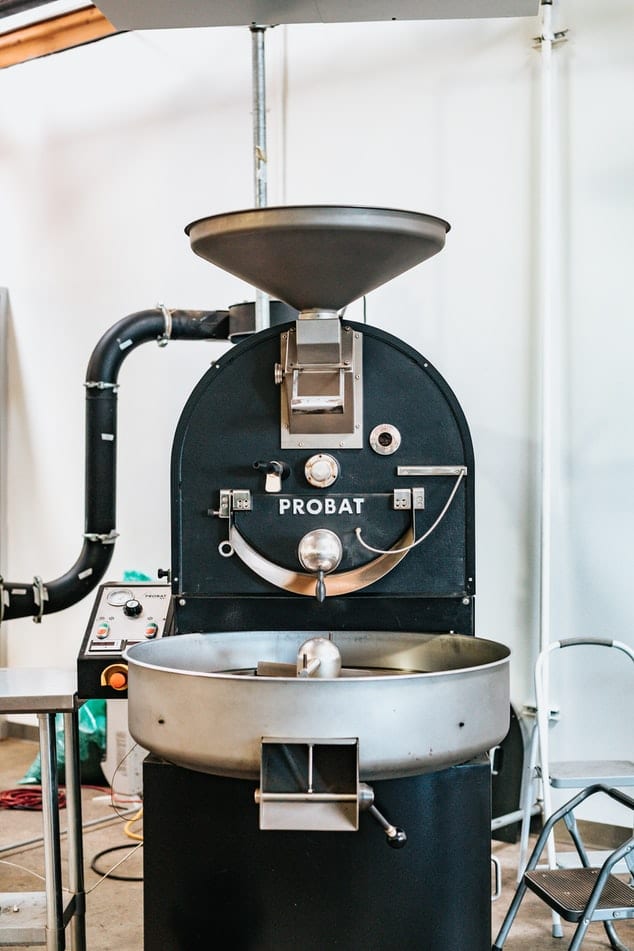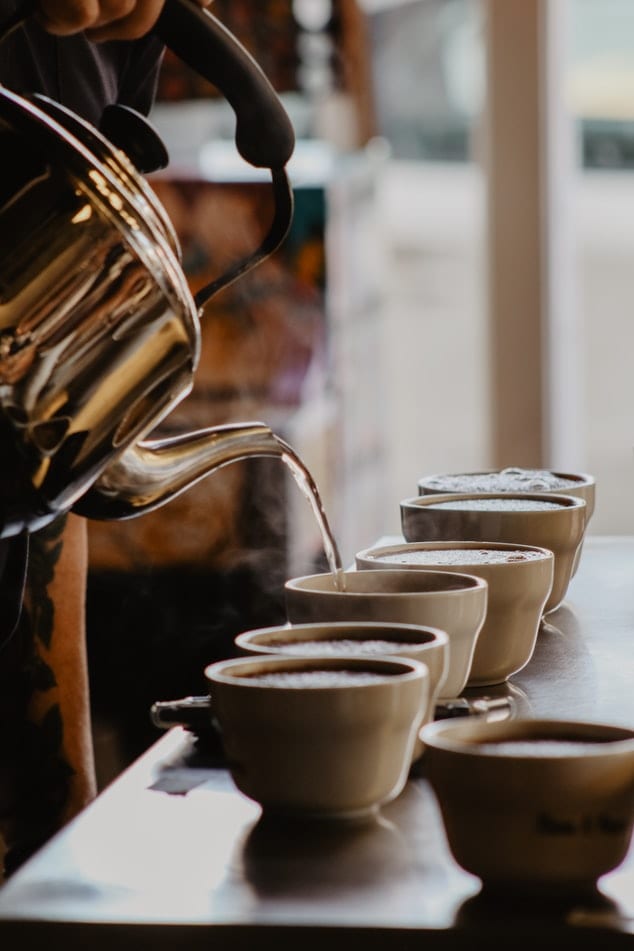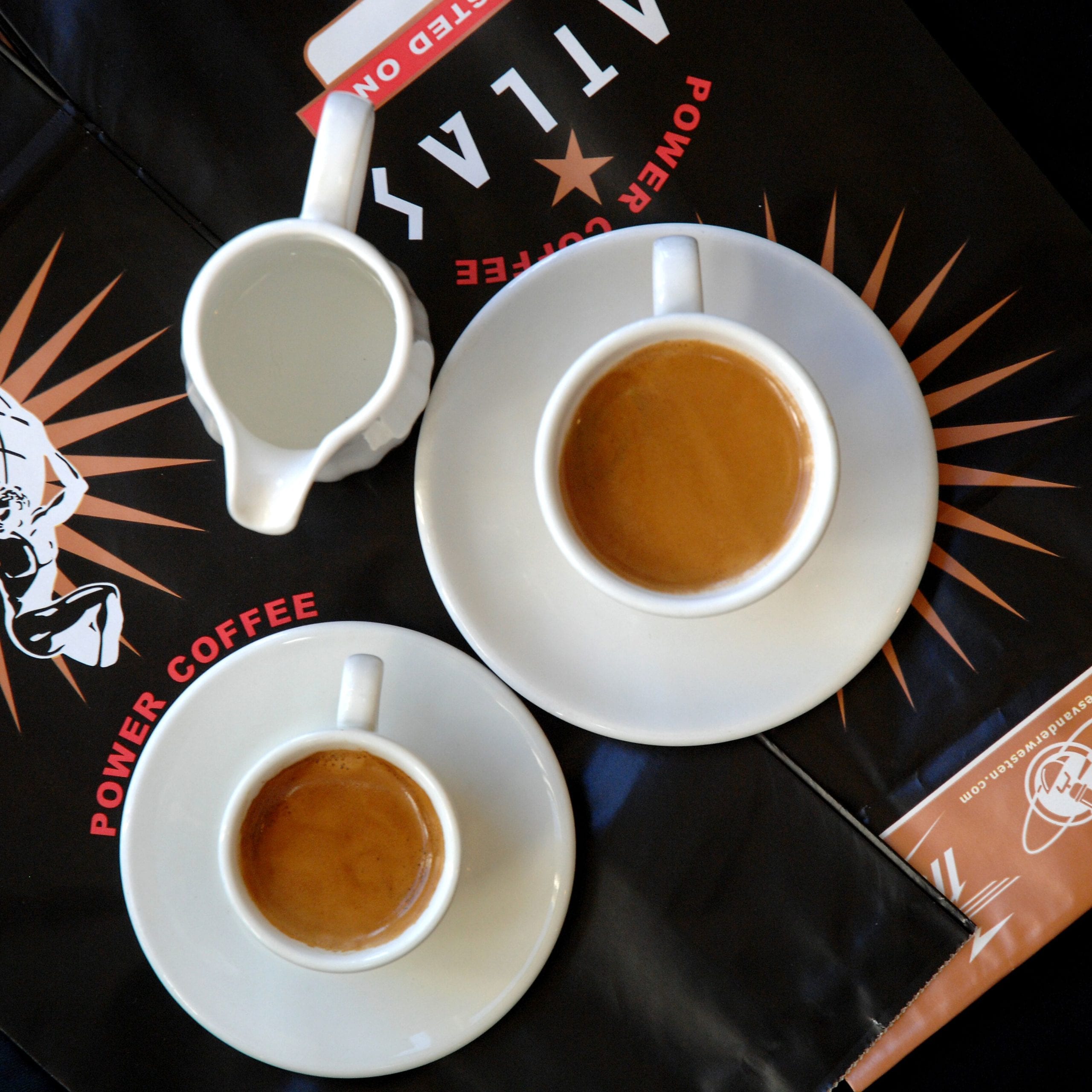Roasting Process, blending and cupping
For those who are a little more interested in the finer details, find out about our process below.
roasting Process

Our gourmet coffees are roasted moderately dark or Agtron Number 45/35 according to the roast colour classification system developed by the Specialty Coffee Association of America in 1995. Roasting in this manner reduces the acidity allowing flavour and body to be highlighted in the cup.
Drum roasting machines are ideal for moderately dark and dark roasts because they provide the mechanism to slow down the roast, reducing the risk of an exothermic reaction and allowing the full flavour of the bean to develop. These machines use less convective heat transfer (only about 85 percent) than other types of roasters. In drum roasting 15 percent of the heat transfer happens through conduction or transfer of heat from bean to bean. The beans stay in constant contact as the drum rotates, allowing flavour compounds, aroma and acidity to transfer between the beans for flavour development. Master roasters manipulate these compounds to develop their intended flavour profile through a truly artistic process.
Only a roasting date tells you how fresh it really is.
Blending and cupping


Blending
Blending green coffee is primarily carried out in one of two ways. The first involves mixing two or more country origin coffees, say Brazil, Colombian and Guatemalan together and roasting; the second comprises mixing the country origin coffees together after roasting.
There are pros and cons for both methods but, in our opinion, blending after roasting (post-roast), while more time consuming and expensive, is a roasting method that honours the individual characteristics of the country origin coffee and produces a more balanced and flavourful cup.
Cupping
The daily routine of cupping coffees roasted for our retail and wholesale accounts is vital to confirm there is consistency in taste and flavour. It is the chief quality control mechanism in our business.
Cupping is carried out in the traditional manner following the protocols laid out by the Specialty Coffee Association of America.
The Cupping Room
Our cupping room provides a location to taste coffee. We do this for three main reasons:
- To identify any taste defects in coffee samples taken from our suppliers to ensure new crop meets our quality standards
- To ensure consistency in taste and flavour of the blended coffee we provide to our accounts
- To identify the coffee’s chief characteristics; namely, acidity, body, flavour and complexity to establish if it can be useful as a constituent of one of our blends or as a country origin (e.g., Guatemalan) coffee on its own
There are two methods we use to determine green bean coffee quality and blend suitability. The first involves the traditional method of cupping whereby you pour hot water over ground coffee, let it steep and then by a world-wide recognised standard you sniff, sip and slurp to evaluate. The second involves slowly infusing ground coffee with ice water over several hours (cold drip) to evaluate.
Evaluating the quality of green coffee is vital. Defective coffees can taint the taste of blends and in extreme cases spoil the flavour of the espresso.
To determine roast consistency and taste characteristics of the coffee we cup in the traditional way. This process provides a mechanism to ensure that the coffees from different origins work in harmony once blended together and the coffee you serve to your customers remains consistent.

